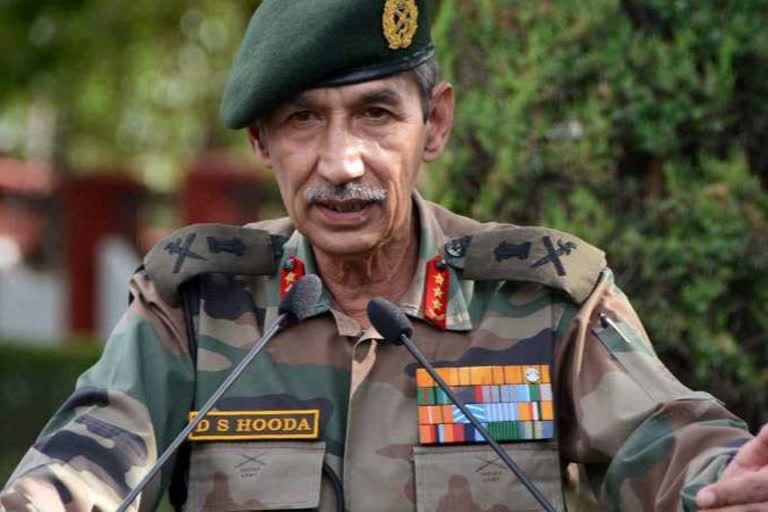New Delhi: After more than 100 days of the standoff in Eastern Ladakh, it is becoming increasingly apparent that the Chinese Army shows little intent to accede to the Indian demand for restoration of status quo ante. This reality was reflected in the Chief of Defence Staff’s statement when he informed the Parliament’s Public Accounts Committee that the country's armed forces are prepared to deal with any eventualities along the Line of Actual Control (LAC), and are ready for a long haul even during the harsh winter months.
The mention of winters in Ladakh throws up visions of soldiers battling freezing conditions in altitudes where oxygen levels are nearly half of what we breathe in our towns and cities. Even a basic necessity like water is hard to get because everything is frozen. For five to six months each winter, Ladakh gets cut off from the rest of the country as the two roads leading to Ladakh, via Rohtang and Zoji La, get completely snowed under.
Winters are no doubt extremely taxing for soldiers, but the real challenge for military planners is to ensure that the troops in Ladakh are fully equipped with everything they would need during what is known as the "road closed" period. This is one of the biggest logistics exercises undertaken by the army each year and known as ‘Advance Winter Stocking’ (AWS). It involves the procurement and transportation of every item that soldiers could require during the six-month period when the Ladakh roads are cut off.
Preparations begin months in advance, and detailed calculations are done for all commodities from a toothbrush to clothing, tinned food, rations, fuel, medicines, ammunition, cement, shelters, etc. Even as the Border Roads Organisation is busy with clearing the snow along the two roads leading into Ladakh, items start arriving in depots around Pathankot and Jammu. As soon as the road is declared open (around May), the first vehicle convoy loaded with stores leaves for Ladakh.
Also Read: Defence minister reviews security situation in Ladakh
A trip to Leh and back takes approximately ten days via Zoji La and 14 days via the Rohtang route. Transit camps are set up along the two routes where drivers can rest for the night. During this two-week journey, a driver sleeps in a different location each night and, after completing the trip, will get a two-day rest before restarting another trip. This will be his routine for the next six months, driving about ten thousand kilometres in one season along difficult mountainous roads. Military transport is complemented by hired civil trucks and Indian Oil Corporation fuel tankers.
The logistical challenges do not end with the arrival of stores into Ladakh. The more difficult task of getting these items to the forward posts is still ahead. Most of the posts along the Line of Control in the Kargil sector and Siachen are not connected by motorable roads. Bulk items have to be broken up into smaller packages and fuel decanted into 20-litre jerricans for carriage to the posts.
Thousands of civilian porters and ponies are pressed into service to ensure that the stores reach their final destination. It would be no exaggeration to say that these civilians are the lifeline for our forward troops. Military mules are also pressed into service, and animal transport drivers (as they are called), routinely walk 1000 km in one season in some of the world's toughest terrain.
Also Read: Pakistan's role between India China standoff
The summer season is also utilized to construct a habitat for soldiers as no construction work can be done in winters. This would perhaps be the biggest challenge this season because of the additional troops that have been inducted into Ladakh. Prefabricated shelters that can shield against sub-zero temperatures would have to be procured, transported, and built-in record time.
It is not only material but also men that have to be moved. The summer season could see the about 200,000 men moving out of Ladakh and a similar number moving in for leave, postings, and turnover of units. Transit camps are activated at Delhi and Chandigarh to cater for those soldiers travelling by air.
The role of the Indian Air Force is invaluable, and the Chandigarh airbase is abuzz with activity since the wee hours of the morning. As dawn breaks, the first set of transport aircraft lift-off for Ladakh, carrying essential stores and troops returning from leave. From Leh airfield and Siachen Base Camp, MI-17, Dhruv, and Cheetah helicopters will ferry stores to the farthest posts in the Siachen sector, braving some of the most treacherous flying conditions in the world. The Air Force logistics support continues through the year, and in winters, it is the only link connecting Ladakh with the rest of the country.
The AWS is a very fine-tuned exercise that gets completed only by November. With thousands of additional soldiers preparing to stay on during this winter, logistics officers at Northern Command and Leh would have to rise to this challenge, and I do not doubt that they will. These officers would take heart from the famous military saying, "Amateurs talk about tactics, but professionals study logistics.”
Also Read: In abrupt move, India pulls out from 'Kavkaz 20' where China, Pak will also take part



